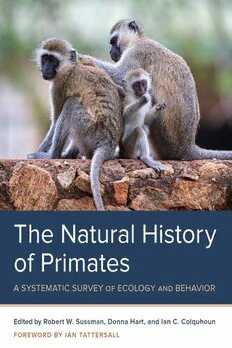
The Natural History of Primates: A Systematic Survey of Ecology and Behavior PDF
02022·36.114 MB·English
Most books are stored in the elastic cloud where traffic is expensive. For this reason, we have a limit on daily download.
Preview The Natural History of Primates: A Systematic Survey of Ecology and Behavior
Description:
The interest in primates, from lemurs to gorillas, has never been greater. Primatologists are continually finding evidence in the behavior and ecology of our closest genetic relatives that sheds light on human origins. So, just who are these 520+ species of complex and intelligent mammals inhabiting the Neotropics, Africa, Madagascar, and Asia? The Natural History of Primates provides the most current information on wild primates from experts who have studied them in their natural environments. This volume provides up-to-date facts and figures on how groups of social primates interact with each other and the plants and other animal species in their ecosystems: what they eat, which predators might eat them, how males and females seek mates, how infants are raised, and myriad other fascinating details about their visual and vocal communication, their ability to craft and use tools, and the varieties of locomotion they employ. As human populations continue to expand into the rainforests, savannas, and woodlands where nonhuman primates dwell, the preservation of these species becomes ever more important. The Natural History of Primates is unique in its emphasis on the conservation status of primate species and its ample discussions of how humans and nonhuman primates can coexist in the twenty-first century.
See more
The list of books you might like
Most books are stored in the elastic cloud where traffic is expensive. For this reason, we have a limit on daily download.
